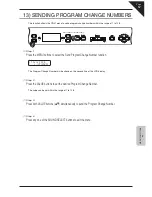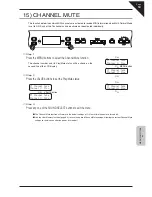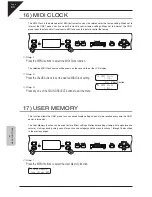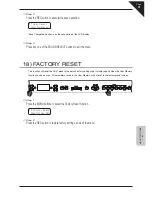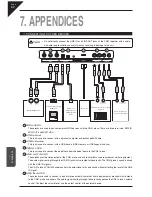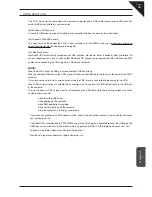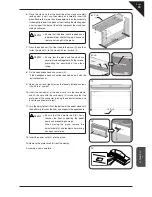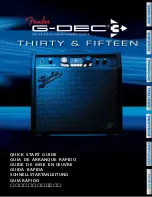
Page
50
MENU FUNCTIONS
6
8) TEMPERAMENT
The CN41 piano offers immediate access to a variety of musical temperaments popular during the Renaissance
and Baroque periods. It may prove interesting and educational to experiment with different temperaments, other
than the modern ‘equal temperament’ standard this is dominant in music today.
The following temperaments are available:
Equal temperament (piano)
(Equal P. only)
This is the default temperament. If a piano sound is selected the tuning is stretched like
an acoustic piano (EQUAL TEMPERAMENT). If any other type of sound is selected
the tuning will be EQUAL (FLAT). An explanation of EQUAL TEMPERAMENT and
EQUAL TEMPERAMENT (FLAT) is provided later in this section.
If a piano sound is used in a layer with any other sound, then both sounds will use
the EQUAL TEMPERAMENT (stretched) tuning.
Pure temperament <major>
(Pure major)
Pure temperament <minor>
(Pure minor)
This temperament, which eliminates dissonances for thirds and fi fths, is still popular
for choral music because of its perfect harmony.
Performers must be aware which key they are playing in when using this
temperament.
Any key modulation will result in dissonances. When playing music in a particular key,
the key of the temperament must also be correctly matched.
When playing in a major key select Pure (Major) and when playing in a minor key
select Pure (minor).
Pythagorean temperament
(Pythagorean)
This temperament, which uses mathematical ratios to eliminate dissonance for fi fths,
is very limited for use with chords, but it produces very characteristic melodic lines.
Meantone temperament
(Meantone)
This temperament, which uses a mean between a major and minor whole tone to
eliminate dissonance for thirds, was devised to eliminate the lack of consonances
experienced with certain fi fths for the Mersenne pure temperament. It produces
chords that are more beautiful than those with the equal temperament.
Werckmeister III temperament
(Werckmeister)
Kirnberger III temperament
(Kirnberger)
These two temperaments are placed in between Meantone and Pythagorean.
For music with few accidentals, this temperament produces the beautiful chords
of the mean tone, but as accidentals increase, the temperament produces the
characteristic melodies of the Pythagorean temperament. It is used primarily for
classical music written in the Baroque era to revive the original characteristics.
Equal temperament (fl at)
(Equal Flat)
This is an ‘unstretched’ equal temperament that divides the scale into twelve equal
semitones. This produces the same chordal intervals in all twelve keys, and has
the advantage of limitless modulation of the key. However the tonality of each key
becomes less characteristic and no chord is in pure consonance.
Equal temperament
This is the most popular piano temperament. The hearing ability of a human is
uneven and is not as accurate with high frequency and low frequency as it is with
the middle range. This temperament’s tuning is stretched to compensate for this so
the sound will be heard naturally to the ears. This ‘stretched’ equal temperament is
a practical variation of the ‘unstretched’ equal temperament which was invented on
a mathematical basis.






















